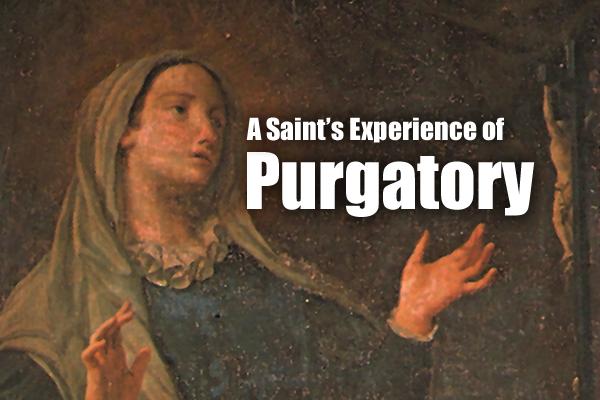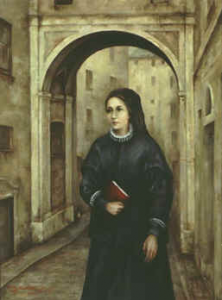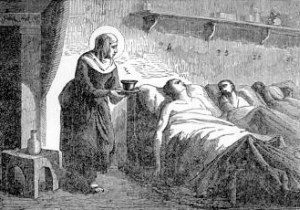
St. Catherine of Genoa was a married woman and charity worker, as well as a mystic. Catherine was born in 1447 to the prominent Fieschi family at Genoa, Italy, the youngest of five children. When she was thirteen, Catherine expressed a desire to enter into religious life, but because of her young age, she was not accepted. Her father died when she was sixteen.
MARRIAGE AND DESTITUTION
Her older brother made arrangements for a marriage for Catherine to Julian Adorno. Julian, a native Genoese, was considerably older than Catherine and he had traveled extensively with work and military service. Although he came from another prominent family, Julian was a terrible husband – lazy, philandering, and reckless with money. The union bore no children. After ten years of marriage, Julian’s habit of squandering money had left the couple destitute.
A LIFE CHANGING EXPERIENCE
Catherine had been asking St. Benedict of Nursia, the great founder of western monasticism, for his intercession for her distressing situation. On his feast day in 1473, Catherine had a life-changing mystical experience during a confession. While we don’t know what the experience was, she fled the confessional, unable to speak any words other than, “No more sins! No more sins!” She later described the experience as an overwhelming encounter with God’s love for her. Whatever the experience was, Catherine was a changed woman. She began attending Mass and receiving Holy Communion daily, an extraordinary practice for a fifteenth century laywoman. Her times of prayer were at times quite intense, leaving her exhausted and emotional. Julian, humbled by his circumstances and also likely influenced by the change in his wife, reformed himself. He became a Third-Order, or “lay” Franciscan, and the couple agreed to live a life of continence.

Now reduced to poverty, they moved to a small house adjacent to the Pammantone Hospital and decided to devote themselves completely to hospital service. There, they tended to the sick and injured.
LIFE IN A HOSPITAL

In 1479, the couple decided to live in the hospital. In 1490, Catherine became the hospital’s administrator. She was a wise and able manager of one of the largest hospitals in Europe at the time. In 1493, a plague broke out in the area that took the lives of more than half of the people, and Catherine herself nearly died. She recovered, but her health was never the same again. Due to her compromised health, she stepped down as hospital administrator in 1496. Julian Adorno died in 1497, leaving an illegitimate daughter from his philandering days. Catherine saw to the needs of the young woman, continued her ministry in the hospital, and lived a daily life of great spiritual depth. After an extended illness, during which she lingered at death’s door for weeks, Catherine died September 14, 1510 at age sixty-three.
A LEGACY OF MYSTICAL EXPERIENCES
For most of her adult life, St. Catherine of Genoa managed to harmonize a life of loving service to the sick and injured people of her city with that of a person whose mystical experiences in prayer were truly extraordinary. From the time of her dramatic conversion, she lived the life of a mystic, her soul in mysterious union with God. In addition to daily Mass, she frequented the Sacrament of Confession, but she did not share the contents of her mystical experiences with her confessors. After the death of her husband in 1497, she had a spiritual advisor, Father Marabotto, in whom she at last confided her experiences. He wrote them down and compiled them. After Catherine’s death, these compilations were published as part of a biography published in 1551, Book of the Marvelous Life and Holy Teaching of the Blessed Catherine of Genoa.

From that publication, there were later published separately Dialogue Between the Soul and the Body and Treatise on Purgatory. It is the latter publication which has especially captured attention over the centuries, because Catherine gives information about what purgatory is, why souls go there, and what they go through while being purified; all gleaned from the mystical revelations given to her. The Church’s Holy Office scrutinized what Catherine revealed, and declared it to be free from error, paving the way for her canonization process. She was canonized in 1737 and her feast day is celebrated in Italy on September 15. She is the patroness of hospitals in Italy.
